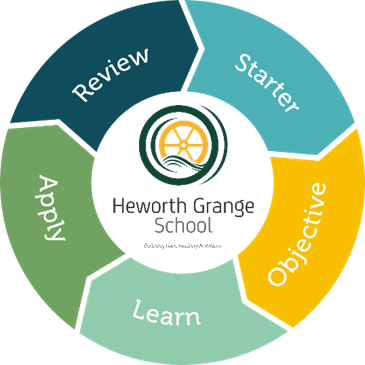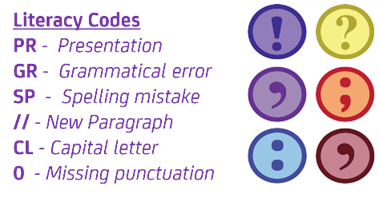Teaching and Learning
Heworth Learning Cycle – SOLAR
At Heworth Grange School, we use a learning cycle to make sure that every lesson counts. It is underpinned by research about how students learn and helps us to deliver meaningful and engaging lessons day in, day out. SOLAR is an acronym for the five key parts of the lesson. More detail is included below.

Starter - Engage students immediately with a retrieval starter. Activate prior knowledge and recall key pieces of learning from earlier in the curriculum.
Objectives - Share the objectives. Motivate and make relevant; why this is important to know? Make explicit why students need to master these skills or pieces of knowledge.
Learn - Teach the concept required for students to progress. Use modelling to show the thought process and path to success. Check regularly to ensure that learners have developed the desired level of understanding.
Apply - Learners use the newly acquired knowledge and apply it to a relevant activity, an exam question or real-life situation. This links learning from the whole of the lesson. Applying the taught skill deepens understanding and is a good measure of progress.
Review - Review and reflect the lesson outcomes. Effective plenaries help solidify learning, aid recall, and allow progress to be demonstrated. Sharing examples of best practice, self- or peer-assessment, and retrieval are great ways to make learning stick.
Marking and feedback
Our feedback model is called SUN (strengths, understanding errors and next steps). We use this model to motivate, monitor and move learning forward. Motivate; so that students know we value their work and their efforts. Monitor; so that we can gauge students’ understanding of the subject, completion of tasks and standards of presentation, as well as inform our subsequent lesson planning. Move learning forward; to support students to make rapid progress by giving them the opportunity to respond to the feedback given to them.
|
Aspect |
What it looks like |
Intended impact |
|
Strengths |
|
|
|
Understanding errors |
|
|
|
Next steps |
|
|
Students are then given an appropriate amount of time in lessons to respond to the feedback that they have been given. They are expected to respond to SUN feedback using green pen. Teachers should check the students’ responses as they circulate the classroom by ‘live’ marking the work. This means that the teacher can know whether the student has moved forward in the way that they expected them to on the back of teacher feedback. If this is not the case, teachers can be responsive and intervene 1:1 with those students during class time to repair learning gaps. In some subjects, for example English, the next steps may be addressed in a subsequent piece of work.

It is vitally important to uphold high standards of literacy in every classroom, regardless of the subject that is being taught. As such, all teachers will highlight key literacy errors within written work.
We use the literacy marking codes outlined in the image to the right to highlight any spelling, punctuation, or grammar errors that students may incur in their written work. Students are then expected to respond by correcting any errors using their green pens.
To support with reducing teacher workload, we encourage teachers to ‘live mark’ wherever possible.




